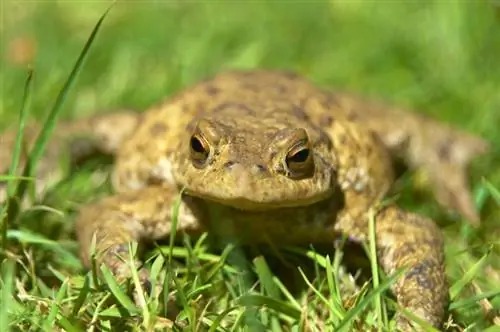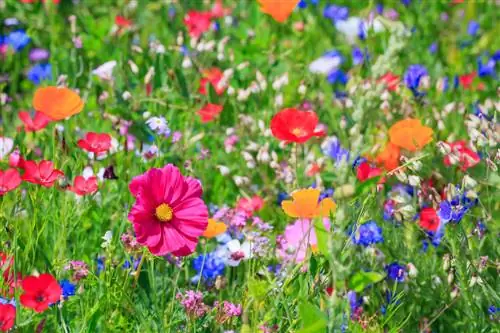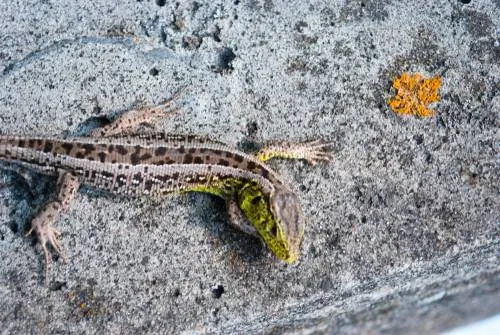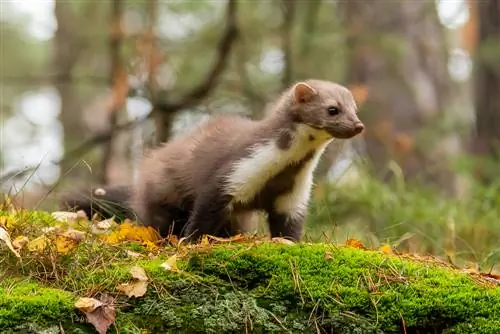- Author admin [email protected].
- Public 2023-12-16 16:46.
- Last modified 2025-01-23 11:21.
For some people they are a burden that they would like to get rid of as quickly as possible. Others, including the real nature lovers among the garden enthusiasts, would love to have one or two representatives of frogs, newts and toads as permanent guests. Watching them is not only very entertaining, especially if there are children on the property. These native amphibians are even extremely useful and help with natural, i.e. environmentally friendly, pest control.
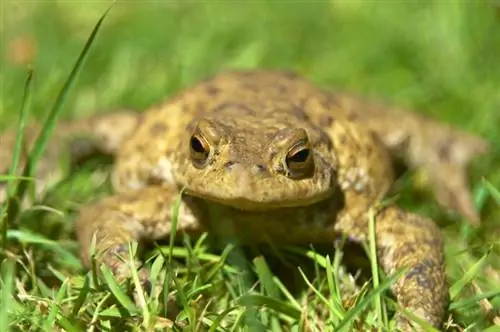
How do I attract amphibians to my garden?
Amphibians in the garden are useful helpers in pest control and ensure ecological balance. In order to attract these animals, the garden should be designed in a natural way, with hiding and retreat options such as piles of brushwood or leaves and no use of chemical pesticides.
A toad in my garden? So some readers might now think, she could only have gotten lost? But it doesn't have it at all, quite the opposite. Maybe a few months ago she created her own personal living space between the beds, hedges and trees, completely unnoticed, and perhaps even overwintered there?
Amphibians in the garden? But how?
No matter whether it's a toad, newt or frog: They shouldn't just be released somewhere outside, because most of these animals would come back again, which could be dangerous for them on busy paths and roads. On the other hand, you shouldn't bring amphibians and all the other small animals home with you on your next walk in the forest or from the bank of your village pond. The population of most species has declined massively in recent years, so that they are now on the red list and therefore under very special protection. Some animals, such as the common toad, are known for their extreme location fidelity, so long-term displacement can even be life-threatening. As an excellent beneficial insect in your garden, it destroys large quantities of harmful insects such as snails, but still lives very dangerously, as these toads are among the favorite meals of grass snakes, raccoons and gray herons.
Create daytime hiding places and retreat areas
It's not just about creating a completely new garden pond. Amphibian-friendly habitats are already ensured if there are one or more protected piles of brushwood or leaves on the property. If necessary, an old, unjointed stone wall will do the trick, and the best option is a garden that is designed as close to nature as possible and not only offers the amphibians enough food, but also protection. In addition, the use of chemical insecticides, snail killers and pesticides should generally be avoided around the animals.
Ground-level pools or ponds are life-threatening for the animals, especially if they are built with vertical walls and no shallow water sections on the bank. It is not possible to leave these danger zones on your own, so in such cases you should set up exit aids as a life-saving measure. The light shafts that are often installed in front of basement windows are just as dangerous for amphibians. If the animals fall in, they usually starve to death unnoticed and dry out completely from the inside as a result of the deprivation of fluids. For protection, it is enough to stretch a fine-meshed plastic net (€9.00 on Amazon) over the coarse metal grids, which protects the frogs, toads and newts from a possible fall to their death.
The most common amphibian species in the garden
Depending on the region, in Germany we deal with a wide variety of amphibian species, which sometimes only differ from one another in barely noticeable details: The most important representatives are:
- Moor Frog: During the mating season the males are extremely blue in color; Animals that live primarily in areas with higher groundwater levels or on the edges of moors grow up to seven centimeters long.
- Grass frog: Green-brown spots as basic color with a length of up to eleven centimeters; pronounced dark brown spots on the underside; live rather undemandingly and in almost all habitats;
- Jumping frog: Four to five centimeters smaller than grass frogs and less heavily spotted; The preferred habitat is mixed deciduous forests; adult animals can jump up to two meters;
- Natterjack toad: back with characteristic yellow line for mouse-like locomotion; Body length around eight centimeters; The main living space is excavation pits and military training areas;
- Great Crested Newt: conspicuously jagged dorsal crest in males; Coloring dark brown to black (very clear yellow-black dots on the belly); grows up to 16 cm long; Habitat often in forests and public landscapes;
- Threaded newt: striking tail with long tail thread; belly light and back brownish; Preferably lives in forests and migrates to small bodies of water (puddles and water-filled lanes in the wad) to spawn; Length nine to ten centimeters;

